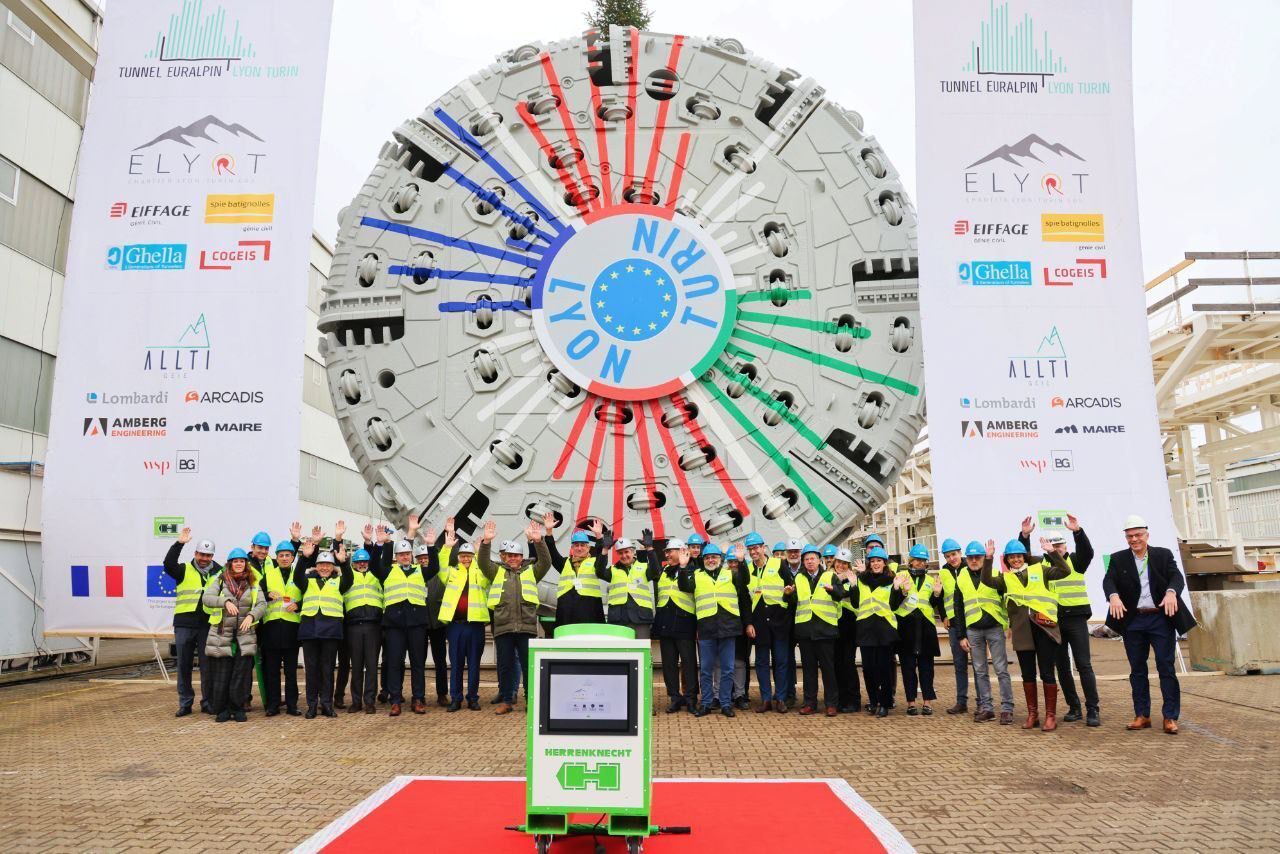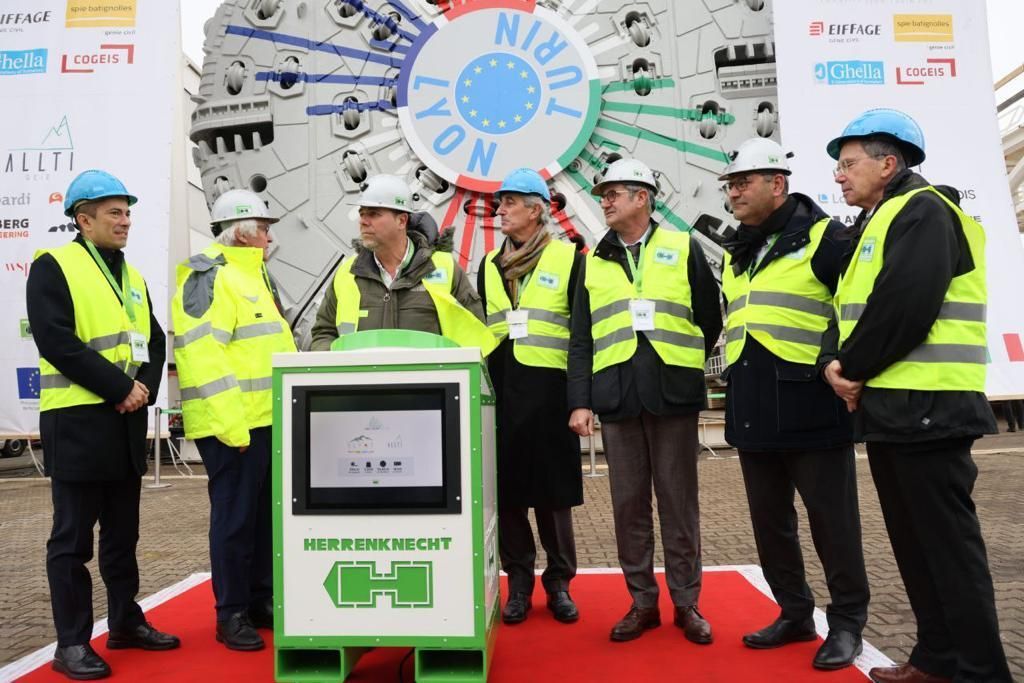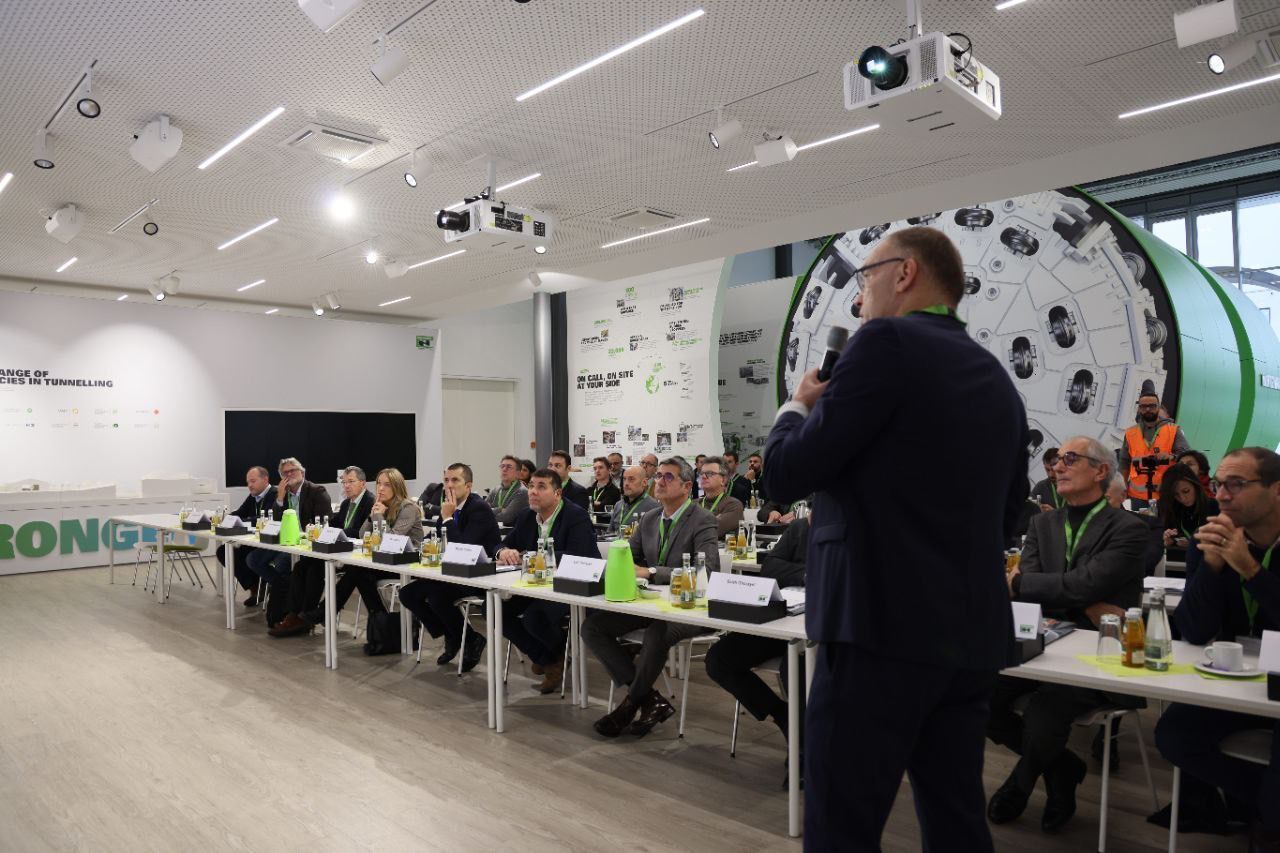Lyon Turin - Here is the TBM that will cross the border
21/12/2023 - 14:31
The gripper tunneling machine was delivered on Thursday 21 December at the Herrenknecht factory in Germany.
Today, a new tunnel boring to excavate the tunnel of the Lyon-Turin railway line has been delivered at the Herrenknecht factory in Germany. This TBM, that will excavate the central part of the Mont Cenis base tunnel, is the first that will cross the border between France and Italy. It has a head of a diameter of 10.4 metres, a weight of 3200 tonnes and a length of 334 metres (the same as a hundred-storey skyscraper).
This is the fourth of the seven TBMs delivered that will allow the realisation of the project, and it is designed to excavate 18 km of one of the two tubes of the Mont Cenis base tunnel, between the Villarodin/Bourget-Modane access adit in France and the Clarea underground safety site in Italy.
Also present at the delivery ceremony were the ELYOT group of companies, consisting of Eiffage Génie civil (group head), Spie batignolles génie civil, Ghella and Cogéis, the project’s bi-national promoter TELT, and the Piedmont Region’s Transport Councillor, Marco Gabusi.
The characteristics of the TBM
It is a ‘gripper’ tunnelling machine that clamps directly on the tunnel walls with its two arms and pushes forward while the head, equipped with 62 cutters, rotates, excavating the rock. The excavated material is conveyed back on a conveyor belt that carries it through the belly of the TBM and thence to the outside world.
While the excavation is being carried out, equipment serving the TBM applies shotcrete support to the walls, along with the bolts and ribs. Behind it advances another machine called the Würm (worm). This is 650 metres long and realises the final concrete lining of the tunnel.
Digging in the heart of the mountain
The choice of this type of tunnel boring machine is dictated by several factors: the type of geology characterising the excavation areas, which here consist of relatively compact, uniform and stable formations; the great depth of the tunnels to be built, with more than 2,200 metres of overburden; and the associated geotechnical phenomena, such as detachments, ‘popping conditions’, or convergence (which is to say that the mountain tends to close the space due to the great pressure of the overlying rock). Not to mention the ‘natural’ high temperatures present at these depths, which were highlighted thanks to the exploratory tunnel of La Maddalena in Chiomonte, which made it possible to establish the specifications for this new TBM.




